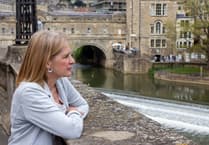Green fields outside Midsomer Norton could lose a quarter of their wildlife under the Council’s plans to develop the site as a business park.
Bath and North East Somerset Council’s own rules say that developments must boost nature by at least 10%. Top Councillors say this nature boost will still be achieved overall — but some of this may be through improvements delivered off site, which is allowed under the council policy.
The Somer Valley Enterprise Zone will offer tax breaks, business rate discounts, and other benefits to businesses that set up in a defined zone off the A362, stretching from Old Mills Lane to the edge of the woods around the Batch — the iconic local “volcano” landmark. Substantial upgrades to the surrounding roads are also planned.
Bath and North East Somerset Council is currently consulting on a “local development order” which would allow businesses to develop the land without needing to seek planning permission. Development would still have to abide by a masterplan and design code set out by the council.
But the plans could mean the site loses a quarter of its nature. A report submitted with the planning documents stated: “Most existing hedgerows within the Highways sites will be lost to accommodate road widening and earthworks. It is proposed that these hedgerows are replaced, where possible, with species-rich hedgerows post development.”
Although most hedgerows on the main site will be retained, with some enhanced to make them more attractive to wildlife, other habitats may be lost and require replacing. The report said: “Following the implementation of the masterplan the majority of area-based habitats will be developed land; sealed surface and will provide no biodiversity units.”
Biodiversity units used to calculate whether a development archives “biodiversity net gain” — a new rule which states developers must replace plants or habitats destroyed and achieve an overall increase of biodiversity on the site of 10%. Introducing biodiversity net gain ahead of its national rollout was a major highlight of Bath and North East Somerset’s partial update to their local plan passed earlier this year, along with a requirement for new housing developments to be net zero.
But the report stated that current plans at the Somer Valley Enterprise Zone would reduce biodiversity on the site by 24.81% and warned: “Biodiversity net gain is not possible on site.” The project will still seek to achieve the 10% increase overall. The report recommends purchasing additional land to create new habitats, “purchasing biodiversity units” from other organisations, or developing biodiversity on other organisations’ lands.
Paul Roper, the council’s cabinet member for economic and cultural sustainable development, insisted that the required nature boost would still be achieved overall. He said: “10% biodiversity net gain will happen both on and off site and this will be conditioned by the local planning authority and is required to meet the council’s biodiversity net gain policy NE3a.
“The council’s policy was adopted through the local plan partial update earlier this year. Biodiversity net gain, which ensures the natural environment is left in a measurably better condition than it was before any development, is delivered either on site or using a mitigation hierarchy which is set out in the council’s policy.
“Before any works start on this site a strategic biodiversity net gain plan will be submitted to the local planning authority detailing how the biodiversity net gain requirements will be met for example, by using additional land to provide space to create new habitat.
“We are aware that the government has this week delayed the implementation of its national biodiversity net gain policy, however the council’s position remains as set out in the local plan partial update.”
The Somer Valley Enterprise Zone is intended to bring more jobs to the the area and reduce the number of people having to commute to Bath and Bristol to work.
A consultation on the council’s plans to allow businesses to develop the fields has been launched, following changes that were made to the plans based on local people’s feedback.
There is a dedicated consultation website here.
The consultation opened on September 22nd and will run until 5pm on October 20th.
LDRS, John Wimperis




